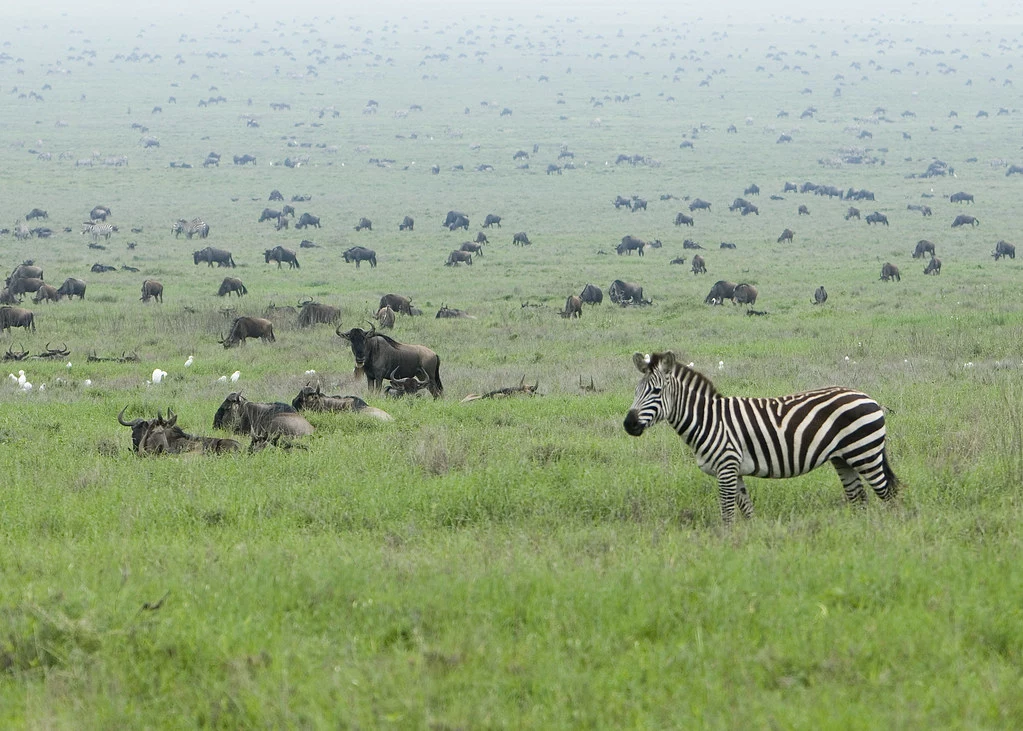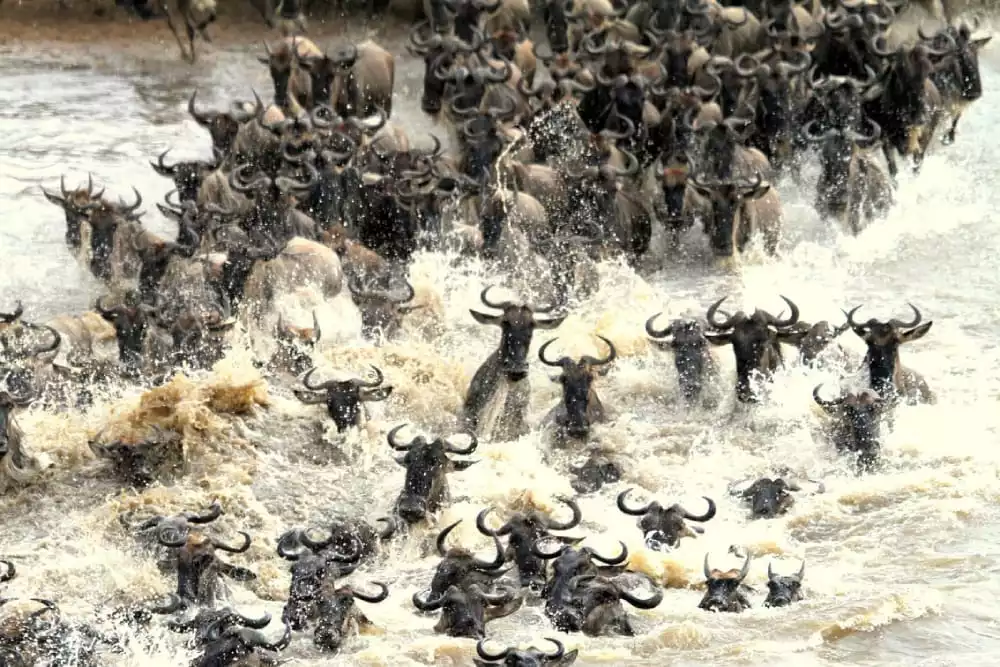The world’s ultimate wildlife spectacle or the 8th wonder of the world, the great migration is the largest migration of land mammals on the planet. The fascinating event takes place annually across the plains of East Africa.
The great migration is an annual phenomenon involving over 1 million animals across the Serengeti-Mara ecosystem. The ever moving circular migration is instigated by wildebeests, gazelles and zebras need to graze and drink water.

So what path do the animals follow? How much distance is covered and how long does it take to complete the journey? Are there any other animals involved? What about challenges? Read on to find out more about the most sought after wildlife experience for travelers around the world.
1. The Animals Follow The Same Path Every Year Towards Greener Pastures Without A Compass
The fact that the animals in the great migration move without a compass is one of the factors that makes the whole journey to be regarded as a wonder of the world. It is believed the animals move clockwise in the 800km-1000km Serengeti and Maasai Mara ecosystem circuit purely on survival instinct.
As to how the animals are able to navigate the path towards greener pastures without a compass, there is no concrete explanation. However, it is believed that whereas humans cannot see the Earth’s magnetic field without a compass, some animals can feel it and make use of it in guiding their migrations. In addition, an animal’s primary response to weather also comes in handy as it can follow the scent of rain emanating from the parched soil and the sprouting of new grass. It is also believed that animals take lightning and thunderstorms which occur in the distance to be pointers. Some studies suggest that a good number of the migrating animals can locate rain into 50 km area.
2. The Animals Migrate A Distance Of Over 2500 km Through Several Hazards
Between 1.5 to 2 million wildebeest, 300,000 zebras, 18,000 elands, 500,000 Thompson gazelles along with topi make the primal trek in search of food annually. These animals are prey to lions, hyenas, cheetahs, leopards, crocodiles and wild dogs that are in abundance on the migration routes.

The lion is the most common predator in the Serengeti ecosystem, they are estimated to be over 3,000 in number and are most notably seen following the herds all around the reserve.
Minus predators, a huge number of animal life is lost at the river crossing. Some die out of drowning especially since the river is deep or strong at certain points and some banks are slippery or steep. Others are trampled on by their own kind thanks to herd mentality and of course a good number are killed by the crocodiles which infest the river. Other natural factors such as thirst, hunger and exhaustion also claim several animal life. Crocodiles of the Mara River are known to lunge out of the water with great power and grasp a wildebeest with their jaws.
Out of every wildebeest crocodiles kill, 50 more drown on their own. Crocodiles cannot even clear the carcasses left behind because they have small appetites and are easily stated as a result of being cold blooded. Scavengers like vultures and Malibu and Malibu Storks fly in from as far as 100km to feast while hyenas have to make due with whatever lands on the river banks. Whatever is left to decompose, insects lay eggs which invite the ibis and mongooses to feed. The rest is absorbed as useful nutrients by the waterbody.
3. Over One Million Individual Animals Migrate Making It The Largest Overland Migration
The sheer number of animals involved in the migration is enabled by the amount of area and distance they cover from Tanzania’s Serengeti National Park to Kenya’s Maasai Mara National Park which amounts to 40,000 km sq. Private conservancies have also come up in areas neighboring the unfenced national parks and reserves (migration routes).

Wildebeests are the main animal participants with an approximate population of 1.2 million of them migrating across East Africa. Before the migration, in the calving season, over 300,000 wildebeests are born. The great columns of wildebeest can go up to 1,000 animals per square kilometer. 300,000 zebras, 18,000 elands, 500,000 Thompson gazelles, elans and impalas together with the wildebeest consume 4000 metric tons of grass each day (1.5 million tons of grass a year). It is estimated that around 6000 carcasses lay dead in the Mara River after crossing and an overall of 250,000 wildebeest and 30,000 zebras are no more at the end of the migration.
4. The Migration Usually Occurs Over The Course Of An Entire Year
The great migration is the largest overland migration and it features over one million individual animals ever circling around the Serengeti-Mara ecosystem in a clockwise motion as they search for grass and water. As much as the herds follow an age old route, exact timing varies based on the rainfall.
Being an annual event, all 12 months of the year have their own separate set of advantages in terms of weather, wildlife, migratory movements, predator encounters, river crossings, and the best spots to take in the most sought after wildlife experience across the globe.
The first quarter of the year is described as the calving season and takes place in the Serengeti. The start of the circle begins as the short dry season comes to an end and parents migrate north to graze. The second quarter sees the start of the rut – mating and fighting for mates. The third quarter climaxes with the crossing of the Mara river. The fourth quarter is when the animals start the journey back south into Tanzania and the great migration begins all over again.
Wildebeest have no herd leader. This means much as they are moving together they can separate and form splinter groups as herd mentality is what determines the path they choose in their journey.
5. Wildebeest And Zebras Eat Different Parts Of Grass Making Them Cohabit
In case you have ever wondered how the wildebeest, gazelle, antelope and zebra are able to co-exist peacefully, because these animals devour different parts of the same grass. Gazelles prefer young shoots, zebras graze on moderate lengthy grass and the wildebeest feast on very lengthy grass.
